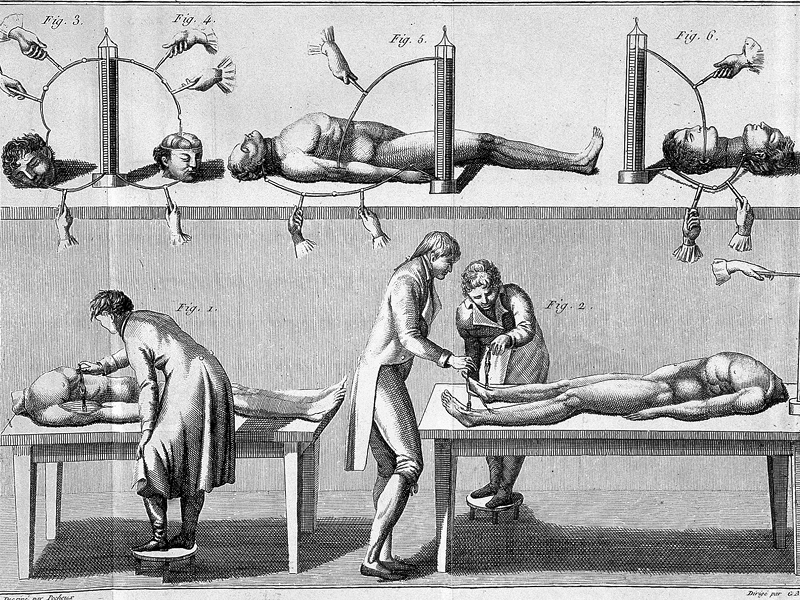In this post, Dr Emily Alder from Edinburgh Napier University talks about the differing forms of science, technology and knowledge in Frankenstein.
Victor Frankenstein brings his creature to life with ‘a spark of being’. At the time Mary Shelley was writing, scientists were debating the nature of human life. Scientists who favoured ‘vitalism’ held that life (which we might also call consciousness, or the soul) was a kind of substance, added to the physical body. Electricity (for example, through the new process known as Galvanism) was considered a possible explanation for this added substance. Materialist scientists disagreed. They thought life was a product of all the materials that make up the human body.
Either way, these explanations challenged the traditional religious idea that the origin of life is divine. By artificially creating a living being, Victor transgresses the role of God. He also takes over the mother’s reproductive role – the creature only has one parent: Victor. The suggestion that neither women nor God are necessary any more for creating new life made Shelley’s story controversial. This is why we often hear Frankenstein referred to in discussions of genetic engineering or so-called test-tube babies. But Victor’s true mistake is that he does not take responsibility for the consequences of his scientific experiment.
Victor is highly trained in medical and physical science, but the creature’s education is different. At first, he knows nothing at all, and learns by experience. Putting his hand in a fire, he learns that although warmth is nice, flame burns. When people he meets either flee or pelt him with stones, he learns unhappy social facts: he looks monstrous and he is feared and unwanted. He also learns by reading, after he finds Milton’s Paradise Lost and Plutarch’s Lives in a discarded satchel. Through poetry and prose he learns about religion, morality, and what it means to be a person. From watching Safie and Felix’s family, he also learns about love and family relationships. This makes him believe that his ‘parent’, Victor, was wrong to abandon him, and he turns against the Frankenstein family.
Because the creature and Victor have had such different educations, they see the world differently, make different mistakes, and tell us different versions of the story. We, the readers, are like Robert Walton, who listens to them both. Only then can Walton make the correct decision to abandon his dangerous Arctic expedition and save the lives of his crew. Shelley’s book suggests that if we want to understand the world properly and act in the best way, we need many different kinds of knowledge: not just about science, not just about people, and not just about stories – we need them all.

